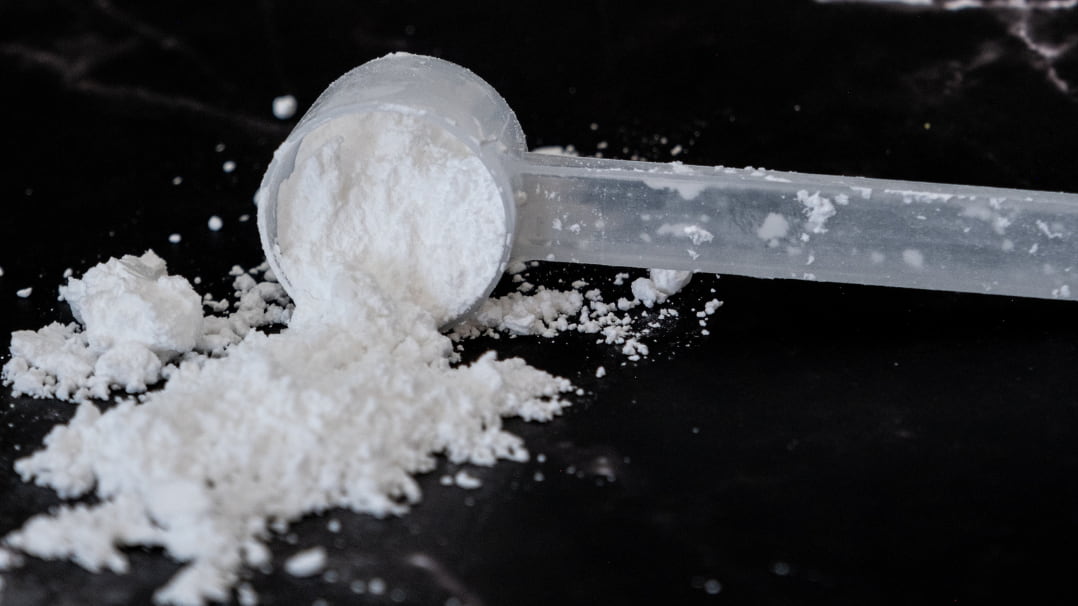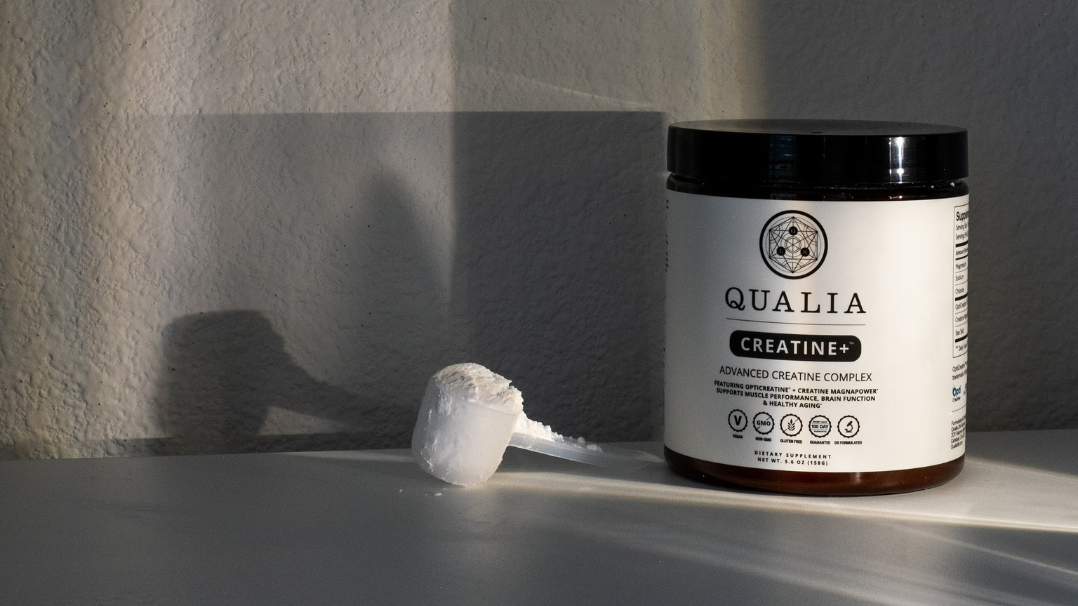What are Postbiotics?
As our knowledge and awareness of the importance of the gut microbiome for human health has expanded, so have the strategies to support the health and activity of our gut’s microbial community. The ‘biotics’ family of substances that support the activity and metabolism of the gut microbiota has been growing as research unveils new compounds and mechanisms of action to benefit our health by supporting the gut microbiome.
One of the important developments in the field was the realization that microorganisms don't necessarily have to be viable (i.e., alive and active) to confer a health benefit to humans—inactive microbes can also benefit human health; these are called postbiotics.
A postbiotic is defined as a “preparation of inanimate microorganisms and/or their components that confers a health benefit on the host” [1]. Postbiotics may be inactive, intact microbes or cellular fragments of microbes, such as cell walls. Postbiotics may also contain microbial metabolites, proteins, or other microbial molecules that may contribute to their beneficial health effect, although such molecules are not essential for a preparation to be considered a postbiotic. Postbiotics must be derived from well-defined microbes, prepared using a reproducible process, and, importantly, have a documented health benefit [1,2].
Postbiotics vs Probiotics
Probiotics are defined as “live microorganisms that, when administered in adequate amounts, confer a health benefit on the host” [3]. The key difference between probiotics and postbiotics is whether or not the microbes they comprise are alive: probiotics are live microorganisms, whereas postbiotics are dead microbes—postbiotic literally means “after life.” What postbiotics and probiotics have in common is that both confer a health benefit on the host. Also, they may do so without necessarily changing the composition of the gut microbiota: they may act through other mechanisms involving the gut microbiota (e.g., by influencing their metabolism) or they may bypass it and directly influence the activity of human cells in the gut (e.g., immune or endocrine cells) [1,2,4].
Figure 1. Postulated mechanisms of postbiotics and example effector molecules utilized by them. Source: Salminen S et al. Nat Rev Gastroenterol Hepatol 2021, 18: 649–667. License: CC BY 4.0.
A key aspect of postbiotics that’s important to highlight is that postbiotics are not simply probiotics that have died. For example, probiotics may slowly lose viability and become inactive with storage time, but that doesn’t mean they turn into postbiotics. In fact, probiotics may lose their beneficial actions when microbes die. Probiotics are defined by the benefits their microbes confer while alive, while postbiotics are defined by the benefits their microbes confer while inactive.
Postbiotics are microbes that have been made inactive through deliberate and controlled processes. Microbes that die naturally may not have the same properties as microbes that have been inactivated in a controlled process. For example, postbiotics can be obtained by heat inactivation, which can cause specific changes to proteins and other molecules on the surface of the microbial cell wall that may influence the way they’ll interact with other microbes or with our epithelial, endocrine, and immune cells in the gut. The same type of changes may not occur in microbes that have died through other processes. That’s why postbiotics usually include the inactivation method in their name (e.g., Heat-killed Lactococcus lactis JCM 5805).
Misconceptions around Postbiotics
The definition of postbiotics used above is the one proposed in 2021 by the International Scientific Association of Probiotics and Prebiotics (ISAPP), and the one we use at Qualia Life. So, when we refer to postbiotics in our products, we mean inactivated microbes and/or their components.
The IASPP definition was debated and established by a panel of experts composed of scientists with different specializations, including nutrition, food science, gastroenterology, microbial physiology, and microbiology. Until then, no consensus definition had been published and the term postbiotics was often used inconsistently. Furthermore, other terms were often used in addition to postbiotics to describe the same type of preparations, such as paraprobiotics, ghostbiotics, non-viable probiotics, heat-killed probiotics, heat-treated probiotics, heat-inactivated probiotics, cell fragments, or cell lysates [1,2]. Of these, the term paraprobiotic [5] was the most widely used and is still commonly found as a synonym for postbiotic.
Although the IASPP definition is still debated, it established criteria for the proper use of the term, specifically, that for a preparation to be categorized as a postbiotic it must 1) be composed of inactivated microorganisms and/or their components and 2) confer a health benefit.
Maybe because of the historical inconsistent use of the term, it is common to find publications, even from reputable sources, that refer to certain products as probiotics when, based on the IASPP definition, they are not. For example, many of the conceptualizations of postbiotics commonly used before the IASPP definition did not include the actual microbes but rather described postbiotics as metabolites or other factors released from or produced by microbes, including molecules produced by microbes from food components. Based on these conceptualizations, fermented food products such as buttermilk, cottage cheese, kefir, kimchi, and sourdough were regarded as postbiotics because they were sources of metabolites produced by microbes from food compounds. But based on the IASPP definition they are not postbiotics; they are simply fermented foods, which the IASPP defines as “foods made through desired microbial growth and enzymatic conversions of food components” [6].
What Are the Benefits of Postbiotics?
In clinical studies, postbiotics have shown a diverse array of benefits to human health, including supporting immunity and general health [7–14], metabolism [15,16], exercise performance and recovery [17–20], gastrointestinal function [21,22], skin health [23], and even mood [24], sleep [25], and vision [26].
But keep in mind that these are not necessarily general benefits of postbiotics. Each inactivated microbial species has its specific mechanisms of action and effects. In fact, even within a species, each strain (i.e., each genetic variant or subtype within a species) may have specific benefits. That’s why the name of postbiotics usually includes the strain (e.g.: Heat-killed Lactococcus lactis JCM 5805, in which JCM 5805 defines the strain). Naturally, different species strains may provide similar benefits, but that is not guaranteed; evidence of a benefit in one strain cannot be assumed as evidence of a benefit in another strain.
Postbiotic Supplements
As clinical studies have shown, postbiotics can be taken as supplements to support several aspects of health. They may do so by influencing the activity of the gut microbiota or by directly interacting with human cells in the gut to support immune, endocrine, and metabolic functions and even the gut-brain axis [27–29]. Postbiotics may be a great complement to probiotics and prebiotics in providing a comprehensive support for human health by targeting the gut microbiome and supporting its crosstalk with human physiological processes.
We designed Qualia Probiotic+ precisely to support health by comprehensively promoting gut performance. Qualia Probiotic+ is a combination of prebiotics, probiotics, postbiotics, fermented foods, herbs, and digestive enzymes that work complementarily to promote digestive health, gastrointestinal performance, the gut microbiota, the gut-immune axis, and the gut-brain axis.*
You may also enjoy exploring how long it takes probiotics to work as well as some of the main factors influencing their effectiveness.
 *These statements have not been evaluated by the Food and Drug Administration. This product is not intended to diagnose, treat, cure, or prevent any disease.
*These statements have not been evaluated by the Food and Drug Administration. This product is not intended to diagnose, treat, cure, or prevent any disease.
References
[1]S. Salminen, M.C. Collado, A. Endo, C. Hill, S. Lebeer, E.M.M. Quigley, M.E. Sanders, R. Shamir, J.R. Swann, H. Szajewska, G. Vinderola, Nat. Rev. Gastroenterol. Hepatol. 18 (2021) 649–667.
[2]G. Vinderola, M.E. Sanders, S. Salminen, Foods 11 (2022).
[3]C. Hill, F. Guarner, G. Reid, G.R. Gibson, D.J. Merenstein, B. Pot, L. Morelli, R.B. Canani, H.J. Flint, S. Salminen, P.C. Calder, M.E. Sanders, Nat. Rev. Gastroenterol. Hepatol. 11 (2014) 506–514.
[4]G.R. Gibson, R. Hutkins, M.E. Sanders, S.L. Prescott, R.A. Reimer, S.J. Salminen, K. Scott, C. Stanton, K.S. Swanson, P.D. Cani, K. Verbeke, G. Reid, Nat. Rev. Gastroenterol. Hepatol. 14 (2017) 491–502.
[5]V. Taverniti, S. Guglielmetti, Genes Nutr. 6 (2011) 261–274.
[6]M.L. Marco, M.E. Sanders, M. Gänzle, M.C. Arrieta, P.D. Cotter, L. De Vuyst, C. Hill, W. Holzapfel, S. Lebeer, D. Merenstein, G. Reid, B.E. Wolfe, R. Hutkins, Nat. Rev. Gastroenterol. Hepatol. 18 (2021) 196–208.
[7]W.-Y. Lin, Y.-W. Kuo, C.-W. Chen, Y.-F. Huang, C.-H. Hsu, J.-H. Lin, C.-R. Liu, J.-F. Chen, K.-C. Hsia, H.-H. Ho, Curr. Microbiol. 78 (2021) 3541–3549.
[8]S. Satomi, N. Waki, C. Arakawa, K. Fujisawa, S. Suzuki, H. Suganuma, Nutrients 13 (2021).
[9]K. Miyazawa, M. Kawase, A. Kubota, K. Yoda, G. Harata, M. Hosoda, F. He, Benef. Microbes 6 (2015) 441–449.
[10]K. Kato, S. Arai, S. Sato, N. Iwabuchi, T. Takara, M. Tanaka, Nutrients 16 (2024).
[11]S. Sato, S. Arai, N. Iwabuchi, M. Tanaka, R. Hase, N. Sakane, Nutrients 15 (2023).
[12]G.-C. Peng, C.-H. Hsu, Pediatr. Allergy Immunol. 16 (2005) 433–438.
[13]Y. Hirose, S. Murosaki, Y. Yamamoto, Y. Yoshikai, T. Tsuru, J. Nutr. 136 (2006) 3069–3073.
[14]S. Shinkai, M. Toba, T. Saito, I. Sato, M. Tsubouchi, K. Taira, K. Kakumoto, T. Inamatsu, H. Yoshida, Y. Fujiwara, T. Fukaya, T. Matsumoto, K. Tateda, K. Yamaguchi, N. Kohda, S. Kohno, Br. J. Nutr. 109 (2013) 1856–1865.
[15]A. Pedret, R.M. Valls, L. Calderón-Pérez, E. Llauradó, J. Companys, L. Pla-Pagà, A. Moragas, F. Martín-Luján, Y. Ortega, M. Giralt, A. Caimari, E. Chenoll, S. Genovés, P. Martorell, F.M. Codoñer, D. Ramón, L. Arola, R. Solà, Int. J. Obes. 43 (2019) 1863–1868.
[16]Y. Tanaka, Y. Hirose, Y. Yamamoto, Y. Yoshikai, S. Murosaki, Eur. J. Nutr. 59 (2020) 2641–2649.
[17]M.-C. Lee, C.-S. Ho, Y.-J. Hsu, C.-C. Huang, Nutrients 14 (2022).
[18]Y.-C. Cheng, C.-C. Lee, M.-C. Lee, H.-Y. Hsu, J.-S. Lin, C.-C. Huang, K. Watanabe, Physiol Rep 11 (2023) e15835.
[19]Y. Komano, K. Fukao, K. Shimada, H. Naito, Y. Ishihara, T. Fujii, T. Kokubo, H. Daida, Nutrients 15 (2023).
[20]Y. Komano, K. Shimada, H. Naito, K. Fukao, Y. Ishihara, T. Fujii, T. Kokubo, H. Daida, J. Int. Soc. Sports Nutr. 15 (2018) 39.
[21]Y. Komatsu, H. Miura, Y. Iwama, Y. Urita, Nutrients 16 (2024).
[22]S.-D. Xiao, D.Z. Zhang, H. Lu, S.H. Jiang, H.Y. Liu, G.S. Wang, G.M. Xu, Z.B. Zhang, G.J. Lin, G.L. Wang, Adv. Ther. 20 (2003) 253–260.
[23]M. Moroi, S. Uchi, K. Nakamura, S. Sato, N. Shimizu, M. Fujii, T. Kumagai, M. Saito, K. Uchiyama, T. Watanabe, H. Yamaguchi, T. Yamamoto, S. Takeuchi, M. Furue, J. Dermatol. 38 (2011) 131–139.
[24]N. Mutoh, I. Kakiuchi, A. Hiraku, N. Iwabuchi, K. Kiyosawa, K. Igarashi, M. Tanaka, M. Nakamura, M. Miyasaka, Benef. Microbes 14 (2023) 109–118.
[25]Y. Nakakita, N. Tsuchimoto, Y. Takata, T. Nakamura, Benef. Microbes 7 (2016) 501–509.
[26]Y. Morita, K. Jounai, M. Miyake, M. Inaba, O. Kanauchi, Nutrients 10 (2018).
[27]D.E. Motei, B. Beteri, P. Hepsomali, G. Tzortzis, J. Vulevic, A. Costabile, Front. Microbiol. 14 (2023) 1273861.
[28]M. Park, M. Joung, J.-H. Park, S.K. Ha, H.-Y. Park, Nutrients 14 (2022).
[29]Y. Wu, Y. Wang, A. Hu, X. Shu, W. Huang, J. Liu, B. Wang, R. Zhang, M. Yue, C. Yang, Front Nutr 9 (2022) 946096.







No Comments Yet
Sign in or Register to Comment